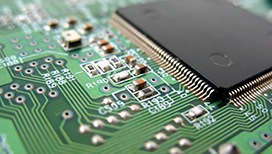METHODS
Soldering methods responsive to a constantly evolving market

– Soldering when simple adhesion will not suffice –
Choices of working methods, temperatures, timing etc can produce markedly different soldering compositions. Insufficient soldering management may lead to unexpected market complains. Sufficient care must be taken to guard against such outcomes.
This document explains the 3 main soldering methods recommended by Japan Unix.
-Highly density products, lead free, environmental regulations, soldering on aluminum and glass-
As electronic devices technologies advance, products shrink and assemblies become more dense. Environmental awareness is higher, and this has led to RoHS and other environmental regulations that mandate lead-free solder, required countermeasures to restrictions on Halogen-related activator constituents , and the expansion of new fields of application such as soldering on non-metallic materials. Soldering is subject to constant changes in the surrounding environment.
The optimal soldering method must be selected in accordance with the bond strength, reliability, cost, and application requirements. For soldering automation : iron tip soldering method, laser soldering method, and ultrasonic soldering method, each method has its own individual characteristics.
The chosen method must be matched to the individual application.

What is the difference between tip and others?
A well-established technique with the highest reliability.
Here we offer some basic information about it.

 日本語
日本語 中文
中文 Deutsch
Deutsch Español
Español
